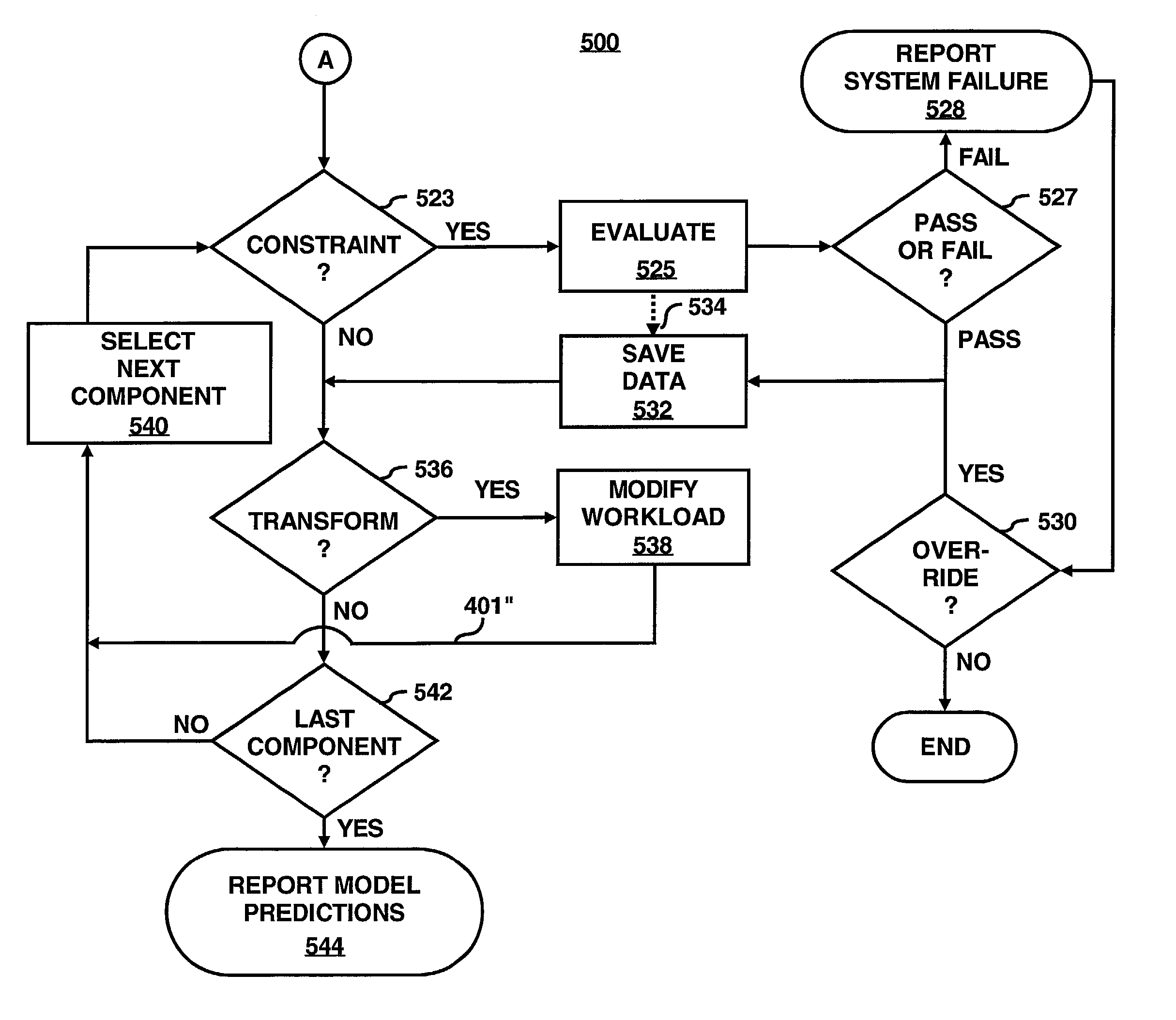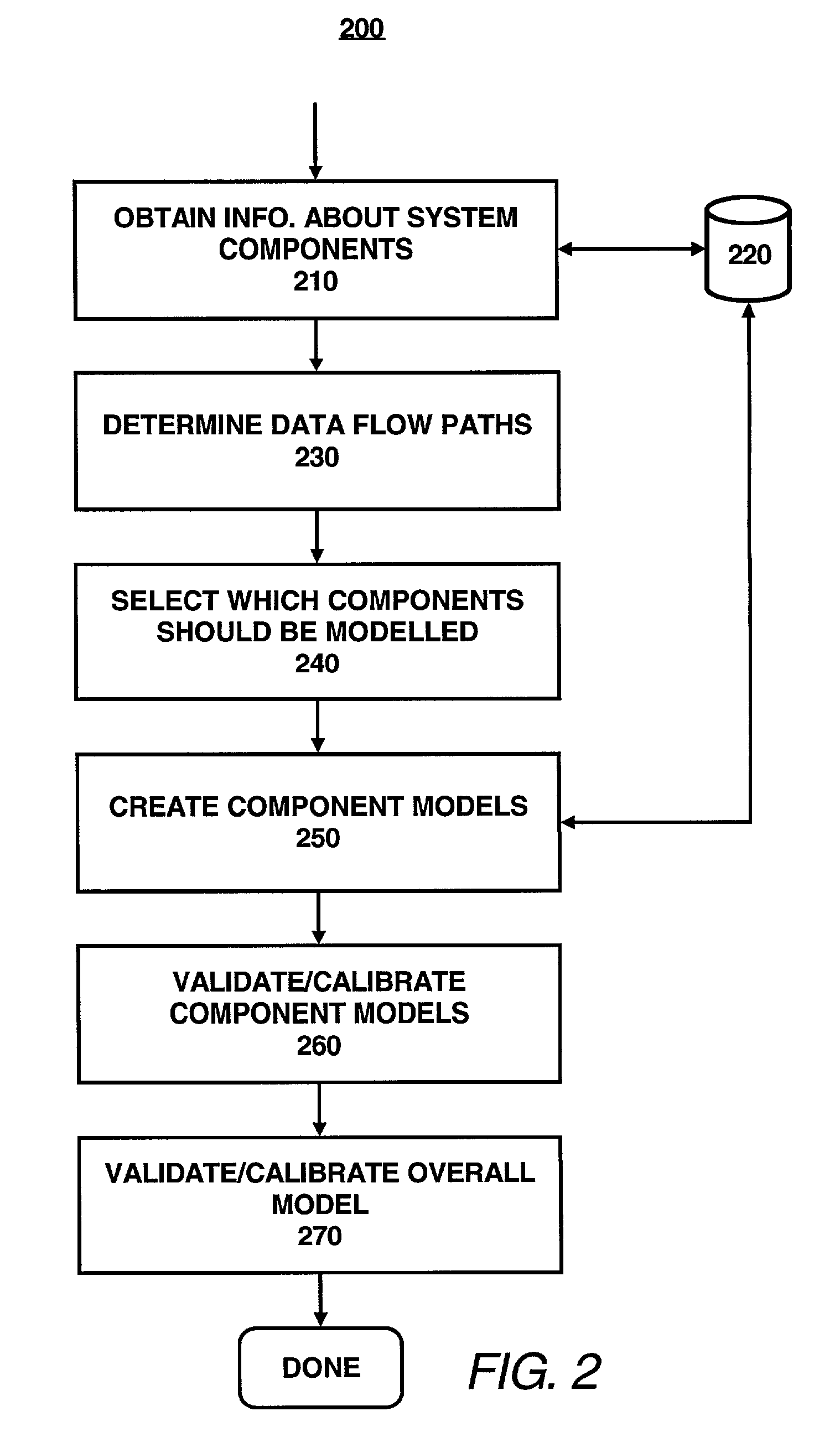Method and apparatus for morphological modeling of complex systems to predict performance
- Summary
- Abstract
- Description
- Claims
- Application Information
AI Technical Summary
Benefits of technology
Problems solved by technology
Method used
Image
Examples
Embodiment Construction
I. Overview
[0023]One embodiment of the invention provides a method for the prediction of the viability of a proposed networked system, such as disk array system, based upon a steady-state prediction of average performance in the case of a proposed or target workload specification. A model is built, providing analog constructs for hardware components of the system as a series of data flow constraints and where required, data workload modifications or transformations for downstream components. The model collects all data flow constraint evaluations. Only if all component models report that no constraint has been violated, the array is validated as providing the required quality of service for the given I / O workload specification.
[0024]As used herein, a “workload” is any set of I / O accesses (also termed “requests”) generated by a host computer; the term “workload characterization” refers to any process of extracting characteristics of the workload. Preferably, the characteristics are i...
PUM
 Login to View More
Login to View More Abstract
Description
Claims
Application Information
 Login to View More
Login to View More - R&D
- Intellectual Property
- Life Sciences
- Materials
- Tech Scout
- Unparalleled Data Quality
- Higher Quality Content
- 60% Fewer Hallucinations
Browse by: Latest US Patents, China's latest patents, Technical Efficacy Thesaurus, Application Domain, Technology Topic, Popular Technical Reports.
© 2025 PatSnap. All rights reserved.Legal|Privacy policy|Modern Slavery Act Transparency Statement|Sitemap|About US| Contact US: help@patsnap.com



